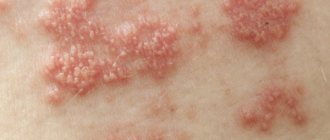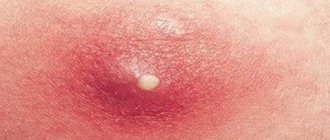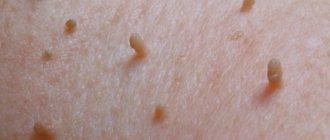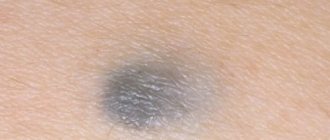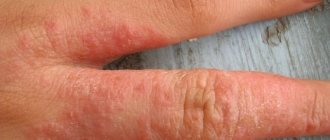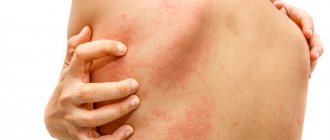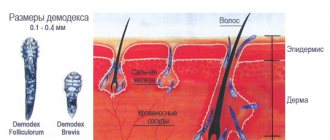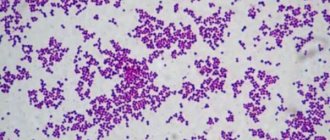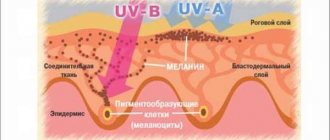For many centuries, debates have raged among theologians, philosophers, physicians, believers and atheists about what stigmata are and what their nature is. The term “stigmata” itself is of Greek origin (stigmatos) and is translated as “sign”, “spot”, “mark”, “wound”. During the Roman Empire, this word denoted a mark on the body of a slave or criminal. The modern meaning of the term is different.
Stigmata are painful bleeding wounds, ulcers, and reddened skin on the human body that appear inexplicably. Stigmata form on the hands, feet and other parts of the body where the wounds of the crucified Christ were supposedly located (from the crown of thorns, nails and spear of the Roman centurion Gaius Longinus).
It is now known that the phenomenon of stigmata exists and has a medical basis. In this article we will consider stigmata from different positions, without infringing on the feelings of supporters and opponents of the divinity of this phenomenon.
History of stigma
There are several versions of why stigmata began to be noted only at the beginning of the second millennium. The first version connects the appearance of stigmata with intensified religious discussions in the Christian world. Another theory explains their appearance by the specificity of medieval Catholic art in a wide variety of forms (painting, sculpture and architecture) and its enormous power of psychological influence on believers.
Some researchers believe that the first stigmata was the Apostle Paul, the author of the Acts of the Apostles. In Galatians 6:17, the Apostle Paul writes, “I bear the marks of the Lord Jesus in my body.” These words of the apostle can be interpreted both literally, in the sense of his acquiring stigmata, and metaphorically. In any case, this is the only mention of stigmatism from the early Christian period. After this, for more than a thousand years nothing was known about the appearance of stigmata.
Most historians of religion take a different point of view: the first person with stigmata was Francis of Assisi, the founder of the monastic order of the Franciscans. As is known from his biography, two years before his death, in 1224, during a church holiday, he developed stigmata - wounds in the places with which Christ was nailed to the cross. The fact of the presence of the signs of Christ on the body of Francis was confirmed by his personal biographer, the Franciscan monk Tomas de Celano in his work “Treatise on Miracles.”
Symptoms of skin disease
The general clinical picture is manifested by the following signs:
- severe discomfort and sensitivity;
- itching;
- pigmentation in a focal area;
- thinning of the skin;
- an ulcer appears in the center of the affected area;
- bleeding;
- at the bottom of the wound there is grayish content (pus);
- With successful healing, a scar appears in the sore spot.
In addition to the general signs, there are symptoms characteristic of each type of ulceration:
- Venous. Location: ankle. Ulcerative skin lesions are small in size or occupy a large area. Without adequate therapy, almost the entire lower part of the lower leg is affected. The surrounding skin is dense and hyperemic. Purulent, serous or hemorrhagic discharge is noted. When pressure is applied to the focal area, severe pain appears.
- Diabetic. The fingers of the lower extremities are affected. They have an irregular shape, uneven outlines, and necrotic areas appear along the edges. Any impact causes pain.
- Arterial. Location: foot. Often this is the back of the sole, heel, big toe. The ulcers are small, round in shape, and the surrounding skin becomes dry and pale. With slight pressure, pain appears.
- Radiation. Appear as a result of irradiation. The lesions are deep, penetrating into muscle tissue and bones. They have a round shape, uneven edges. The surrounding skin is atrophied, with signs of pigmentation, telangiectasia is diagnosed.
- Neurotrophic. Location: heel tubercles, soles, lateral part of the feet. They have great depth and resemble a crater in appearance. Serous, purulent discharge with an unpleasant aroma is noted. The skin around the affected area is keratinized and dense. When pressing, the pain is practically not felt.
- Malignant tumors. Ulcers appear due to the breakdown of the tumor. Signs of skin damage are clearly expressed. The wound is located in the center of the dense infiltrate. The edges are lumpy, and necrotic areas are noted at the bottom. Putrid, crumbly discharge appears.
- Infectious. Multiple rashes appear, localized in groups. They can be located in any part of the body, often affecting the lower legs. They are characterized by shallow depth and have an oval shape. The bottom of the ulcers is covered with scab. The surrounding skin is inflamed and there is a purulent, thick discharge with an unpleasant odor.
Article on the topic: Symptoms of glenohumeral periarthritis - the mechanism of disease development
Numbers
There is no clear answer to the question: how many bearers of the signs of Christ’s suffering have there been throughout history? According to various estimates by researchers of this phenomenon, over the past 778 years there have been 406 relatively reliable cases of the appearance of stigmata. 68% of stigmata bearers were Catholics, usually members of religious orders, particularly Dominicans and Franciscans. The rest are members of various religious sects. 90% of stigmata are recorded in women. All ages are susceptible to the phenomenon of stigmatism. Sometimes they even appear in children. Example: Cloretta Robinson, an African-American woman from Oakland (USA). At age 10, Cloretta began bleeding from her feet, chest, and forehead during a religion class. During a medical examination, it was established that the girl was physically absolutely healthy, grew up and was brought up in a deeply religious Catholic family. I spent all my free time from preparing homework reading the Bible.
Stigmata with external manifestations
Most common. They can have a variety of shapes and depths. Chronicles indicate that stigmata occur in the form of growths, bruises or spots, deep, sometimes bleeding wounds on the arms and legs; wounds on the forehead, as if from a crown of thorns; wounds on the side under the ribs; marks on the shoulder from carrying a cross; Sometimes traces of flagellation were observed, as well as various kinds of graphic images, for example, in the shape of a cross on the forehead. There are examples of the appearance of cruciform scars at the site of a spear wound on the right or left side. For example, the famous clairvoyant Catherine Emmerich (1744–1824) had a peculiar wound resembling a cross appear on her chest over the years.
Non-healing weeping wounds
A weeping wound is accompanied by the release of ichor in large quantities. This happens if a person is injured due to a burn (electrical, chemical, solar), there is inflammation of the skin, bacterial or fungal infections, the skin is torn off, there are diaper rashes, abrasions and calluses.
In order to avoid infection in such a wound, an antiseptic bandage is needed. If there are foreign objects in the affected area, the damaged skin is separated by more than one centimeter, or severe bleeding is observed, then you should urgently go to the emergency room. If all this is missing, you can treat the wound and apply a bandage yourself.
Do not use iodine or brilliant green to wash an open, weeping wound. These products will burn the tissue and the fluid will not drain. And this can cause inflammation and suppuration. It is better to use hydrogen peroxide. It can be treated with a solution of Chlorhexidine, Unisept, Decasan or Miramistin. For subsequent cleansing and treatment of the wound, you can use a furatsilin solution or an isotonic solution (boiled water with table salt, 5 grams per glass of water). These products can be used to remove dried bandages and to treat the surface of the affected area.
Stigmata of internal localization
In this case, we are dealing with internal bleeding or the appearance of marks on the internal organs in the form of religious symbols. Historical documents indicate that in 1659, during the communion of a certain Catherine Savella, five rays flashed in the church, striking the woman. After Savella’s departure to another world in 1691, an official autopsy was performed in the presence of the clergy, which confirmed the presence of stigmata on the heart in the form of five points forming a crucifix. Such phenomena are rarely observed and, from the point of view of modern science, have little evidence.
Weeping wounds. Treatment
How to treat non-healing wounds that get wet? Until a crust has formed on the affected area, you should avoid ointments. For treatment, use solutions or powders with a drying effect. In this case, a saline solution works simply and effectively. How to cook it? Dilute salt in water in a ratio of 1x10.
To speed up tissue regeneration and eliminate infection, you should use antibiotic powder. For this, the following drugs are prescribed: “Streptocide”, “Penicillin”, “Levomycetin”.
Combined-action drugs aimed at suppressing bacteria and fungi, such as Baneocin, are also used. A thin layer of powder is applied to the treated surface of the wound using a cotton swab. Then it is covered with a sterile gauze pad and bandaged. After 4-5 hours, the bandage should be moistened with saline solution. Afterwards it is worth replacing it. If the wound is healing, there is no pus or there is very little of it, you can not rinse with saline solution, but limit yourself to only treating the affected area.
If the pain does not go away, the edges of the wound darken, the inflammation spreads to nearby areas of the skin, you should urgently visit a doctor. In this case, the doctor will prescribe antibiotics and antibacterial drugs to avoid infection and sepsis. In addition, vitamins are necessary to maintain the body’s resistant functions.
Invisible stigmata
The least provable and least often recognized case. The person complains of pain or various physical sensations in “religiously significant” parts of the body. The story of Catherine of Siena is known (during a visit to Pisa, April 1, 1375) - the future saint only experienced acute pain at the site of Christ’s wounds. Interestingly, in 1471, Pope Sixtus IV, with a special bull (the main medieval papal document), prohibited the painting of her images with stigmata due to the confrontation between the Franciscans, who denied her stigmata, and the Dominicans, who defended the stigmata. Pope Urban VIII lifted this ban in 1630, stating that stigmata in the form of markings on images were possible, but they should not bleed.
Diabetic wounds
If a person has diabetes, how to treat non-healing wounds? Now we'll tell you. When treating a non-healing wound in diabetes, you need to remember how to properly treat the affected area and bandage it:
- The wound should be clean. To do this, change the bandage as often as possible. When doing this, use disposable sterile gloves. Treat a non-healing wound with a disinfectant. For treatment use Chlorhexidine solution.
- Clean the wound from accumulation of dead tissue and pus. For this, hydrogen peroxide and cotton wool are used. Water the affected area and the area around it generously with peroxide. This will make it easier to remove the necrosis. The procedure is quite painful, but necessary. After this, you need to dry the wound. Cotton balls should be formed according to the size of the affected area. Afterwards, carefully, but penetrating deeply into the wound, remove the liquid.
- Using ointment. If the wound festers, using Vishnevsky and hydrocortisone ointment will help. If there is no pus and the wound is healing, oil-based products containing plant extracts are suitable.
- If there is an infection in the wound, ointments with antibiotics (Levomekol, Levosil) are used. For healing, products with anti-inflammatory components (Levomisol, Romazulon) are suitable. If the wound heals poorly, the doctor may prescribe medications with antibiotics and a course of vitamins.
It is worth following the prescriptions of your doctor and consulting if you want to use traditional medicine recipes. Self-medication and the wrong choice of medications can significantly worsen the condition of the wound and slow down healing.
Catholics are for
In Catholicism, people with stigmata are revered as ascetics who especially pleased the Creator.
However, throughout the history of the phenomenon, the official Vatican has been wary of the facts of their appearance. The official Vatican website does not provide any information about stigmata, their number and the very procedure for canonizing such persons. The question arises: why did not all stigmata undergo the canonization procedure? Scattered sources on the Internet contain information that after the death of the stigmata, sometimes up to 100 years must pass before canonization. Priests and medical experts appointed by the Vatican carefully study each case of stigmata, taking into account all the details of the pros and cons.
For example, the Italian historian Sergio Luzzato has suggested that Padre Pio of Pietrelcina (1887–1968, canonized as a saint on June 16, 2002), the last recorded person with stigmata, used phenol to create them. Sergio cited the testimony of the pharmacist from whom he allegedly bought it. The fact is that phenol, being an extremely toxic substance with high penetrating activity, when it gets on the skin, can cause chemical burns that can develop into ulcers. The historian's testimony was even examined by the Vatican, but was not considered credible. Agostino Gemelli, a Franciscan physician and one of the founders of the Catholic University of the Sacred Heart, called Father Pio “an ignorant, self-mutilated psychopath, exploiting the people’s gullibility.”
Orthodox against
After the formalization of the schism of Christianity in 1054 into the Catholic and Orthodox churches, Catholics concentrated on developing ideas about the human nature of the Savior. A new church holiday, Corpus Christi, was established, dedicated to the veneration of the Body and Blood of Christ. On this holiday, believers remember the bodily life of Jesus. It was to this time that the first information about the appearance of stigmata dates back to this time.
Unlike the Catholic Church, the Russian Orthodox Church has a negative attitude towards stigmata. The “Eastern” branch of Christianity, which includes Orthodoxy, suggests that the vector of mystical worldview should be directed primarily to the inner world of the believer, where the invisible struggle of the soul with dark principles takes place. At the same time, all external effects fade into the background, because they cannot determine a person’s spiritual choice.
From the point of view of canonical Orthodoxy, the appearance of stigmata, which are simply a mechanical repetition of the wounds of Christ, makes no sense. Stigmata are seen as a challenge, a manifestation of pride, a purely sensory phenomenon that has nothing to do with God, and sometimes simply as blasphemy. This position has its canonical justification. The disciple of John Chrysostom, the Christian saint Nile of Sinai (Nile the Faster) (d. ca. 450), warns: “Do not want to sensually see Angels, or the Power, or Christ, lest you go crazy, mistaking a wolf for a shepherd and bowing to your demon enemies "
Orthodoxy, unlike Catholicism, puts a completely different meaning in the concept of “bearing the wounds of Christ” - symbolic. Bearing the stripes of Christ implies:
- heartfelt love for God;
- martyrdom (for example, among the apostles and Christian martyrs);
- voluntary self-destruction (shackling oneself with iron belts and chains).
Manifestation mechanism
A general pattern of manifestation of the phenomenon was identified, which can conditionally be called the “stigma triad.” It has been noticed that the algorithm for the appearance of stigmas does not change from century to century. It includes the following chronological sequence: "religious ecstasy - visions - stigmata."
From the point of view of modern psychiatry, the appearance of the vast majority of stigmata can be reduced to three reasons:
- hysterical;
- imitation;
- interpretive.
Neuropathic or hysterical
Bleeding of neurogenic origin in the twentieth century was studied by domestic clinicians, the most famous of whom is Professor Yuri Ivanovich Lorie (1959). The phenomenon of “neurotic bleeding” was deeply studied by the Russian hematologist, corresponding member of the Russian Academy of Medical Sciences Zinoviy Solomonovich Barkagan.
In patients with these disorders, droplets of blood are released from intact skin or mucous membranes, bloody tears, sweat, spontaneous bleeding from under the nails, from the brow ridges, the auricle, and the urethra are possible.
When the patient is overly focused on religious themes, blood is released from the skin in those places where, according to legend, nails were driven in during the crucifixion of Christ. Apparently, such patients can primarily be classified as true stigmata. Diagnosis of this pathology is helped by questioning the person being examined or those who know him, ascertaining the presence of psychopathological personality changes, the presence of religious fanaticism in the patient, and the presence of the “stigma triad” in the follow-up of the disease.
These types of pathology are quite rare in practice, so the pathogenesis has not been sufficiently studied. Clinicians note the connection of the pathology with hysteroidal (conversion) reactions and psychopathization of the patient’s personality.
Bleeding often stops spontaneously, even for long periods, and just as spontaneously resumes. When treating stigmata using modern medicine methods (blood transfusions, plasma, platelet mass, blood-substituting solutions), doctors were practically unable to achieve improvement in the treatment of bleeding wounds: some time after therapy, bleeding resumed.
How do skin ulcers form?
As a rule, the upper layer of the epidermis is restored, but in case of negative phenomena (skin diseases, mechanical or chemical burns, injuries) this process slows down. Tissue necrosis occurs. Necrotic areas disappear, and a new epithelial layer slowly begins to form in their place. Sometimes there is an absolute stop of the regeneration process. Wounds form in these places.
The skin is negatively affected by any ailment. The reason is a violation of metabolic processes, dysfunction of internal organs and systems.
Such processes lead to weakened immunity. The result is that the disease progresses, the natural mechanism of restoration of the upper layer of the epidermis is suspended. If treatment is not started in a timely manner, necrotic areas will become a breeding ground for infection.
Localization of skin defects
Depending on the provoking factor, wound sites can form on any part of the skin or mucous membrane:
- on the back;
- on the face and neck;
- on the lower extremities;
- on the palms;
- on the body;
- on the head;
- on the genitals.
Diabetes provokes the appearance of defects in the lower extremities, and a trophic ulcer is diagnosed.
A child, a man and a woman are equally at risk of a pathological condition.
In older age, with hidden diseases, ulcers manifest themselves.
Imitation, or Munchausen syndrome
To feel and understand the religiosity and power of medieval fine art, just look at the masterpieces of European painters: Hans Memling “The Crucifixion of Christ”, Hieronymus Bosch “Carrying the Cross with St. Veronica”, Duccio “The Crucifixion”, Antonello da Messina “The Crucifixion”, Hans Memling "The Crucifixion of Christ", Lucas Cranach the Elder "The Crucifixion". Stigmata probably appeared more easily among believers in this hyper-religious era.
This disease was first described in 1951 by the English endocrinologist and hematologist Richard Asher. The syndrome was named after the famous dreamer and visionary, writer of incredible stories, Baron Munchausen.
The idea is that the patient artificially induces bleeding and imitates it by self-harm. This disorder is explained as one of the manifestations of hysterical neurosis or other mental disorders. Patients can imitate a tendency to bleeding by taking large doses of chemicals and drugs that inhibit the activity of the blood coagulation system, by damaging the mucous membranes, or by some other means. With simulated bleeding, a person can provoke a very real and severe hemorrhagic syndrome.
In this case, they talk about “pseudo-stigmata” - a phenomenon when bleeding wounds are the result of imitation bleeding.
Causes
There are several reasons for the appearance of ulcerative defects of the skin and mucous membranes:
- Pathologies of the microvasculature
- Chronic vein diseases
- Diabetes
- Atherosclerotic lesion of large arteries of the lower extremities, leading to narrowing of their lumen and circulatory disorders
- Systemic connective tissue diseases
- Bacterial lesions of the body
- Aerobic and anaerobic infections
- Streptococci
- Malignant diseases of the skin and mucous membranes
Interpretive
Such stigmata are associated with delusions of religious content in severe mental illnesses, for example, schizophrenia.
I have more than once encountered cases where a patient expressing delusional ideas of religious and mystical content received some kind of real physical injury, but interpreted it as “God’s providence or a sign.” I remember the patient very well, a pleasant, smiling middle-aged man with a thick beard and kind, radiant eyes. The patient called himself God with complete confidence. When I asked how he understood this, the patient said with the kindest smile:
“Imagine, I go into the church in the evening, after the service... I look around, and everywhere my image is looking at me!” And it was as if the singing of angels was heard in my head... And when I came home, I looked, and a pimple appeared on my forehead... and my hands were so red and itchy... I immediately realized that these were signs, like those of Christ!..
Stigmata can be viewed from the point of view of medical pathology or norm. Almost all officially described cases of stigmata, including those recognized by the Roman Catholic Church, fit well into the medical classification. For example, the stigmatization of Catherine of Sienna, like most other episodes, from my point of view, is of a pronounced hysterical nature. The existence of stigmata as a special case of neurotic bleeding gives us, doctors, extremely important information: the influence of the psyche on the body in general and the blood system in particular can be much greater than we are used to thinking.
Diagnostics
The diagnosis is made based on the patient's complaints and examination by a doctor. If necessary, additional research is carried out:
- Doppler ultrasound of the vessels of the lower extremities to exclude venous thrombosis or atherosclerotic lesions of the arteries
- Determination of serum glucose levels to exclude diabetes mellitus
- Sowing the contents of the ulcer on nutrient media to exclude the bacterial nature of the defect
- Determination of autoantibodies in blood
- Ulcer biopsy to exclude skin malignancy

